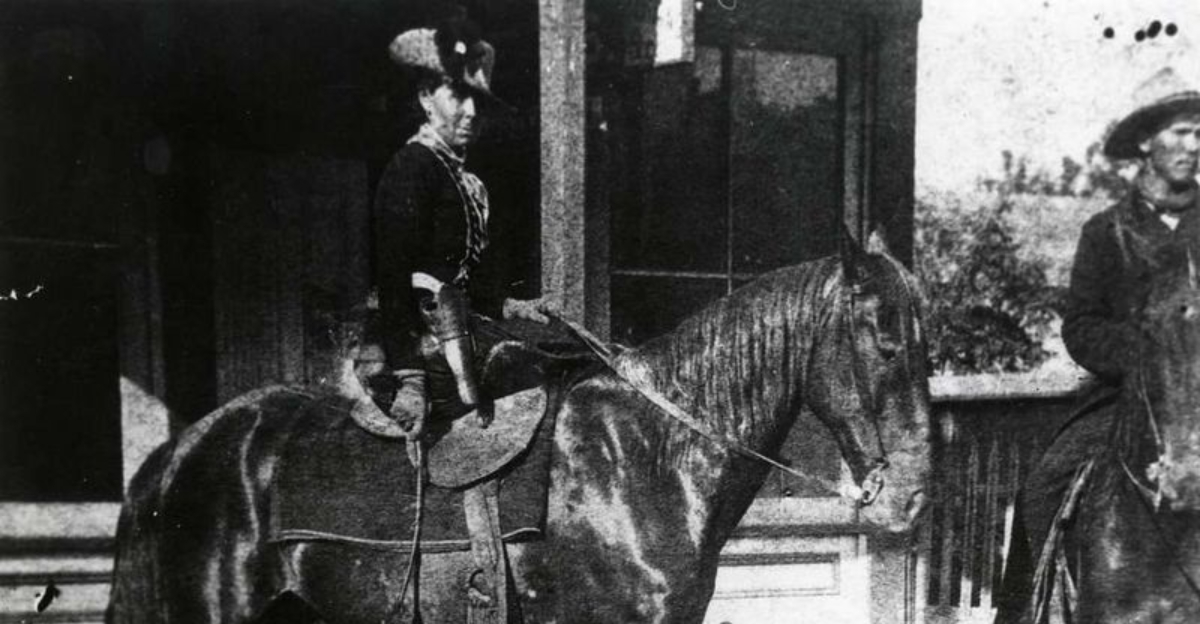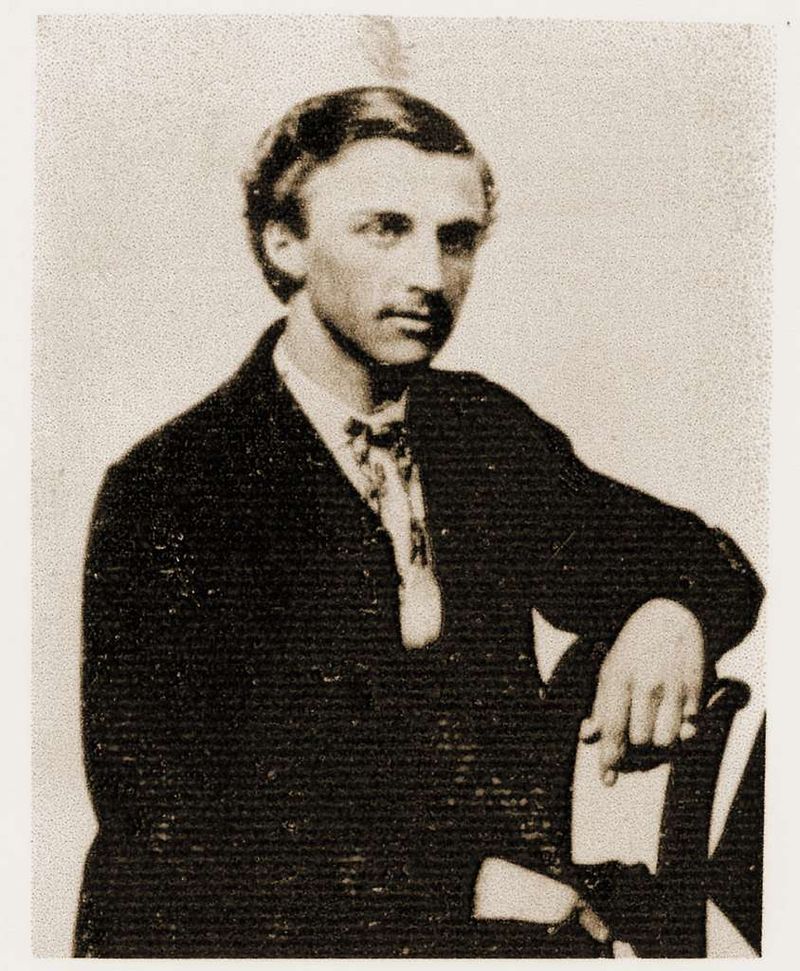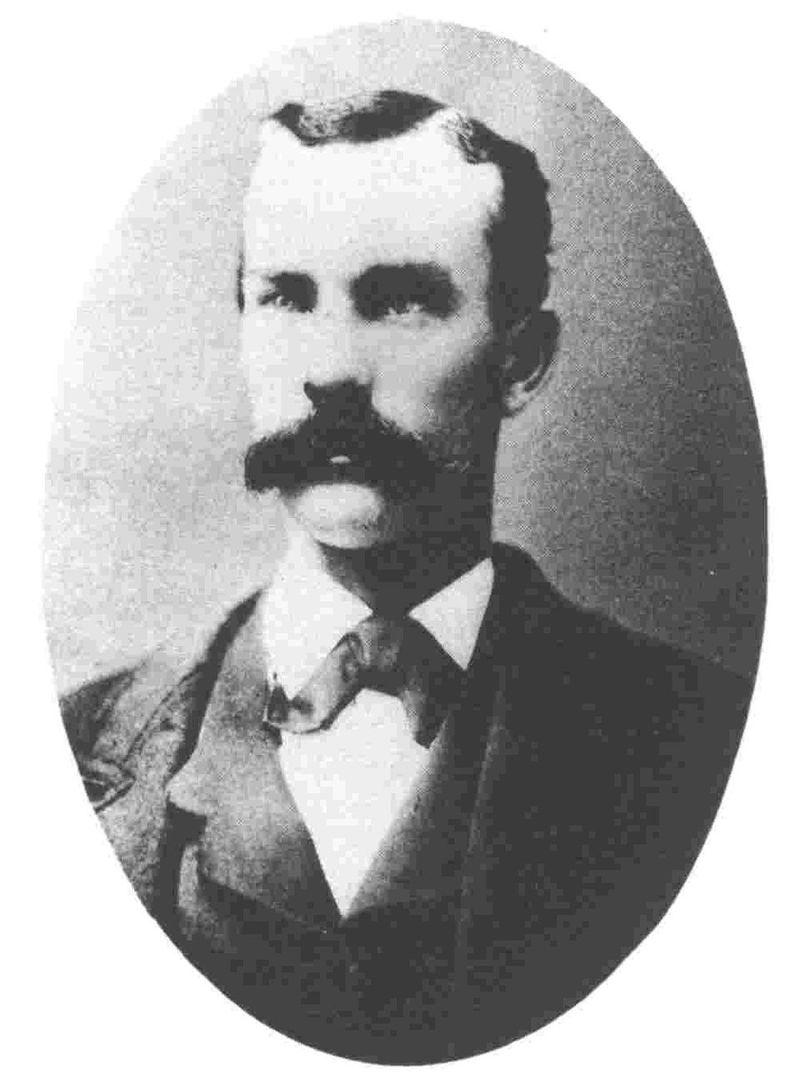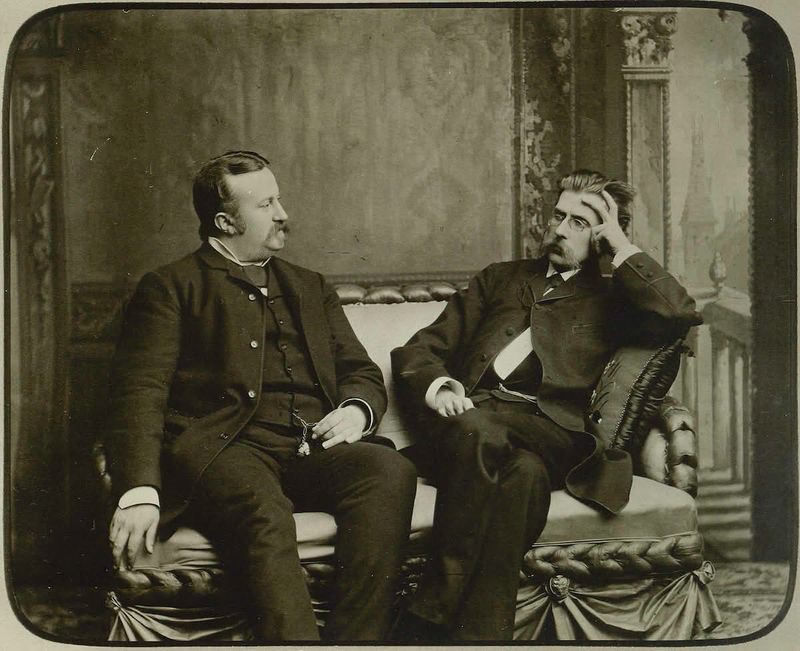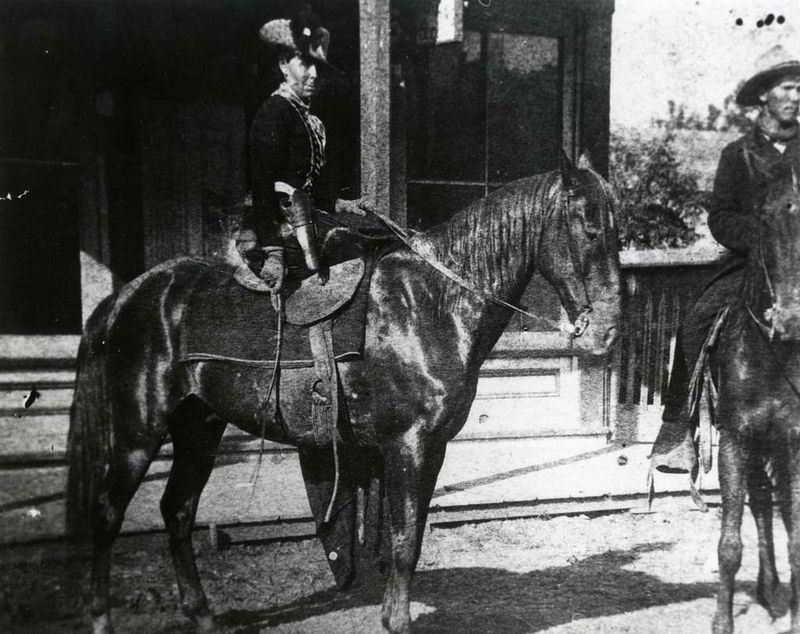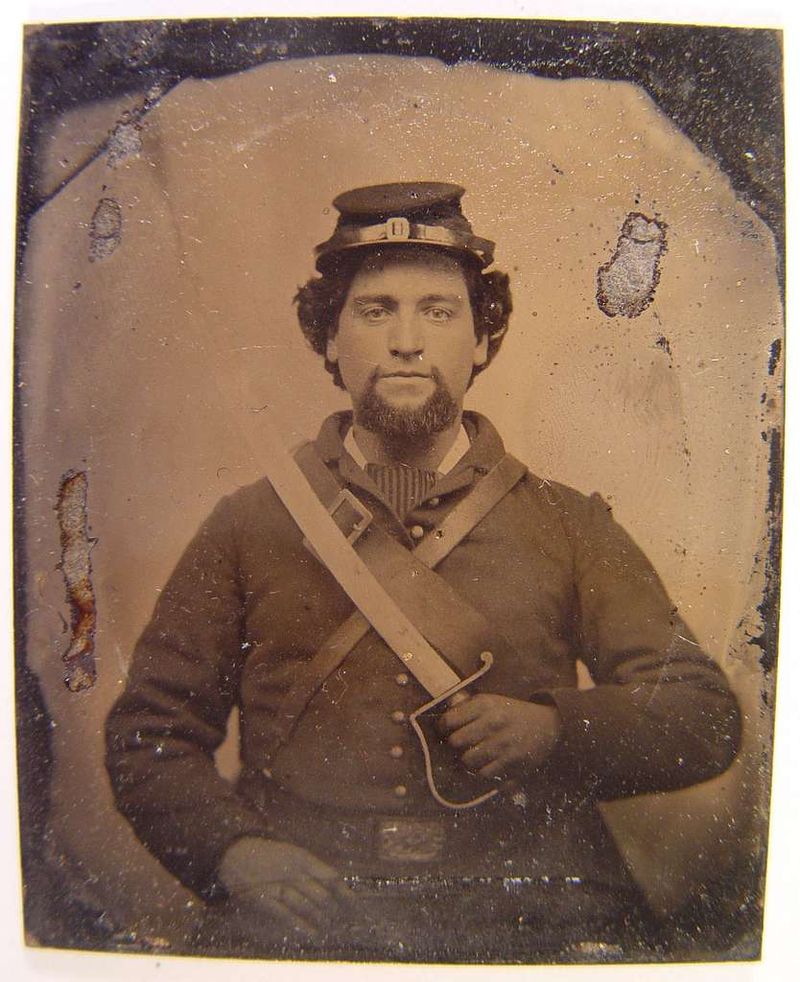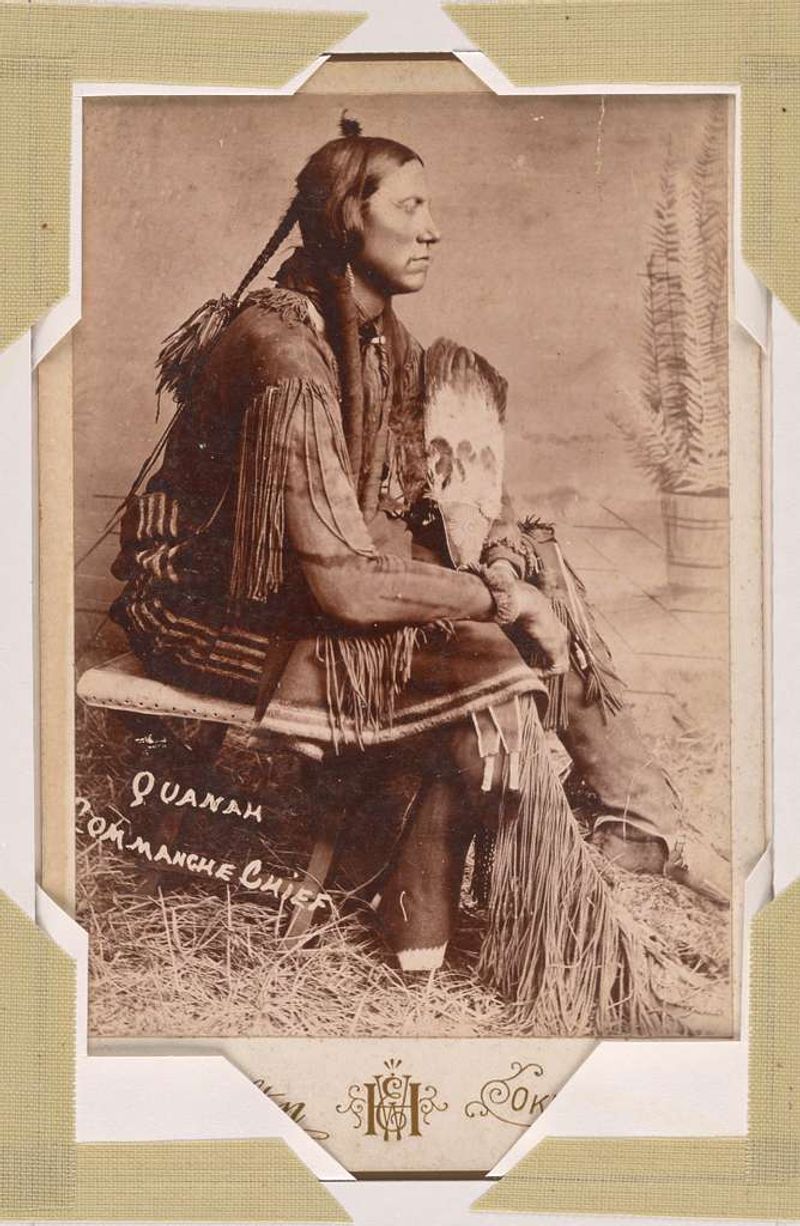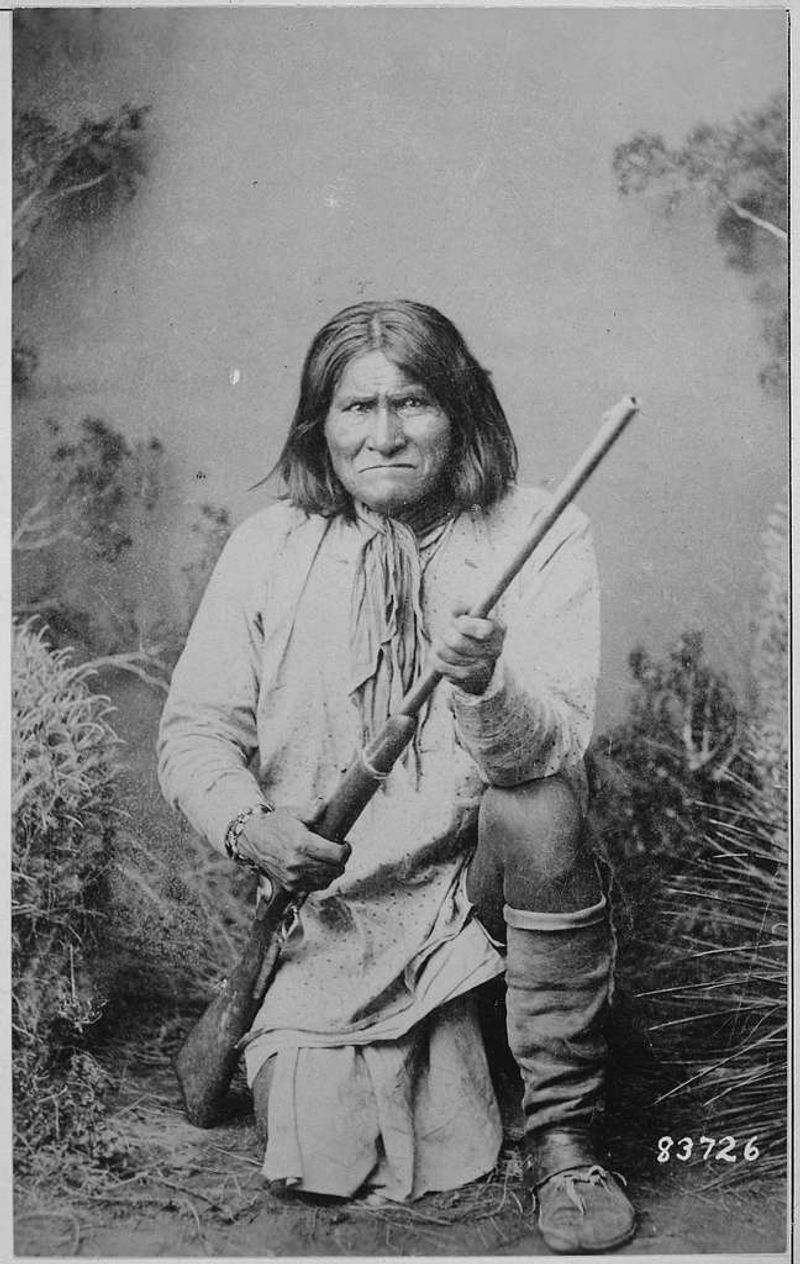The American frontier was a wild place where danger lurked around every corner and lawlessness ruled many territories. Among the settlers, miners, and cowboys were notorious renegades who robbed trains, rustled cattle, and fought against authority with blazing guns. These outlaws became legends whose stories still capture our imagination today, reminding us of a time when the West was truly wild.
Billy the Kid (William H. Bonney)
William H. Bonney earned his notorious nickname before reaching his 21st birthday. His involvement in the Lincoln County War turned a teenage cattle rustler into one of history’s most recognized outlaws. The conflict in New Mexico Territory pitted rival factions against each other in violent shootouts.
Stories claim he killed eight men, though historians debate the actual number. His quick draw and fearless attitude made him both feared and admired across the Southwest. Law enforcement hunted him relentlessly through dusty towns and desert hideouts.
Sheriff Pat Garrett finally tracked him down in 1881, ending his short but explosive life. Yet Billy’s legend only grew after death, inspiring countless books, films, and songs. His youthful rebellion continues symbolizing frontier lawlessness generations later.
Jesse James
Born into turbulent times, Jesse James rode with Confederate guerrillas during the Civil War before turning to crime. He formed the James-Younger Gang with his brother Frank and cousins, targeting banks and railroads across multiple states. Their daring robberies made headlines nationwide and embarrassed lawmen who couldn’t catch them.
The gang’s reputation grew with each successful heist, stealing thousands from wealthy institutions. Many poor Southerners saw Jesse as a Robin Hood figure fighting against Northern banks. His charm and cunning helped him evade capture for nearly two decades.
Betrayal came from within when gang member Robert Ford shot Jesse for reward money in 1882. His dramatic assassination only strengthened his legendary status in American folklore.
Butch Cassidy (Robert LeRoy Parker)
Robert LeRoy Parker adopted his famous alias while working as a cattle rustler in Wyoming Territory. He assembled the Wild Bunch, a gang of skilled outlaws who specialized in robbing trains and banks with military precision. Their hideout at Hole-in-the-Wall became legendary as an outlaw sanctuary in the rugged mountains.
Cassidy’s intelligence and planning made him different from typical frontier criminals. He reportedly never killed anyone during his robberies, preferring brains over bloodshed. Pinkerton detectives pursued the gang relentlessly, forcing them deeper into remote territories.
Eventually, Butch and partner Sundance Kid fled to South America to escape the law. Their fate remains mysterious, with some claiming they died in Bolivia while others insist they returned home secretly.
Billy Claiborne
Claiborne earned the nickname Billy the Kid II, though he never matched the original’s fame. His association with the Cochise County Cowboys placed him at the center of Arizona Territory’s violent conflicts. He witnessed the famous Gunfight at the O.K. Corral but fled when bullets started flying.
This cowardly act earned him mockery from fellow outlaws and lawmen alike. Despite his reputation, Claiborne continued running with dangerous crowds in Tombstone. His quick temper often got him into fights he couldn’t finish.
Frank Leslie, a bartender and gunfighter, ended Claiborne’s life in 1882 during a drunken confrontation. At barely 22 years old, his brief criminal career demonstrated how quickly frontier violence could claim young lives.
Johnny Ringo
Educated and well-spoken, Johnny Ringo seemed an unlikely candidate for outlaw life. Yet his deadly skills with a pistol and involvement in cattle rustling made him a feared figure in Arizona Territory. He feuded with the Earp brothers and their allies during Tombstone’s violent era.
Ringo’s intelligence contrasted sharply with his violent tendencies and heavy drinking. Some accounts describe him reciting Shakespeare between gunfights and card games. His complex personality fascinated both contemporaries and later historians studying frontier psychology.
Found dead in 1882 with a bullet wound to the head, the circumstances remain disputed. Was it suicide, murder, or accidental death? The mystery surrounding his final moments only added layers to his dark legend.
Curly Bill Brocius
Leading the Cochise County Cowboys required both ruthlessness and charisma, qualities Curly Bill possessed abundantly. His gang controlled cattle rustling operations across the Arizona-Mexico border, stealing livestock and reselling them for profit. Lawmen like the Earps viewed him as a major threat to frontier order.
Brocius allegedly killed Marshal Fred White during a drunken confrontation in Tombstone. Though acquitted, the incident cemented his reputation as a dangerous criminal. His conflicts with the Earp faction escalated tensions throughout the territory.
Wyatt Earp claimed to have killed Curly Bill in 1882 during a vendetta ride, though no body was ever found. Some believe he escaped to Mexico and lived under an assumed name for years afterward.
Dave Rudabaugh
Nicknamed Dirty Dave for his poor hygiene, Rudabaugh rode with several notorious gangs throughout his criminal career. He rustled cattle in Kansas before graduating to more serious crimes like train and stagecoach robberies. His association with Billy the Kid brought him deeper into New Mexico’s violent outlaw culture.
Captured and jailed multiple times, Rudabaugh always managed escapes or pardons. His luck ran out when he killed a jailer during one breakout, making him a wanted man across multiple territories. He fled south into Mexico seeking refuge from American law.
Mexican authorities eventually caught up with him, and he died in a cantina shootout in 1886. His head was reportedly displayed as a warning to other American outlaws seeking Mexican sanctuary.
Ned Christie
A respected Cherokee councilman, Ned Christie’s life changed forever when authorities accused him of murdering a federal marshal. Maintaining his innocence, he refused to surrender and fortified his home in Indian Territory. For five years, he defended himself against numerous attempts to capture or kill him.
Christie’s engineering skills helped him build an impressive log fortress with rifle ports and reinforced walls. Federal marshals attacked repeatedly but couldn’t breach his defenses. His resistance became legendary among Cherokee people who saw him as a symbol of Native sovereignty.
In 1892, lawmen finally used dynamite to destroy his fort and killed Christie in the assault. Whether guilty or innocent, his defiance against federal authority made him a frontier renegade whose story reflects deeper conflicts between Native nations and U.S. expansion.
Belle Starr
Born Myra Maybelle Shirley, she transformed into the Bandit Queen of Indian Territory. Belle associated with famous outlaws like Jesse James and the Younger brothers, allegedly harboring fugitives at her ranch. She married Cherokee outlaw Sam Starr and together they built a criminal empire based on horse theft.
Unlike most female frontier figures, Belle openly defied conventional expectations of women’s behavior. She dressed stylishly, rode expertly, and reportedly could outshoot most men. Her bold personality and criminal connections made her both fascinating and scandalous to newspaper readers nationwide.
Ambushed and killed in 1889, her murderer was never conclusively identified. Belle’s legend grew after death, inspiring dime novels and later Hollywood films that romanticized her outlaw lifestyle considerably.
Henry Starr
Belle Starr’s nephew inherited more than just her last name—he continued the family’s outlaw tradition with enthusiasm. Henry pulled off numerous bank robberies across Oklahoma Territory, once robbing two banks simultaneously in the same town. His daring exploits made him a celebrity criminal during the early 20th century.
Captured and imprisoned multiple times, Henry always found ways to return to crime. Later in life, he attempted to reform and even acted in silent Western films about his own criminal career. This strange turn demonstrated how outlaws were becoming entertainment commodities.
During his final robbery attempt in 1921, a banker shot Henry, ending his decades-long criminal career. His life spanned the transition from genuine frontier lawlessness to modern law enforcement, making him one of the last true Western outlaws.
The Apache Kid
Once a trusted U.S. Army scout, the Apache Kid’s life took a dramatic turn after a personal conflict led to murder charges. His service to the military meant nothing when Native justice clashed with American law. Sentenced to prison, he escaped and became one of the Southwest’s most elusive fugitives.
For years, he evaded massive manhunts across Arizona and New Mexico territories. His intimate knowledge of desert survival and Apache warfare tactics made him nearly impossible to track. Settlers blamed him for raids and killings throughout the region, though evidence often proved questionable.
The Apache Kid simply vanished from historical records after 1894, his fate unknown. Some believe he died in the wilderness, while others claim he lived peacefully in Mexico’s Sierra Madre mountains until old age.
Tom Starr
Tom Starr’s name struck fear throughout Cherokee Nation and surrounding territories for decades. His personal vendetta against rival families resulted in numerous killings during the mid-1800s. Cherokee authorities struggled to control his violent raids, which often targeted both Native and white settlements.
Despite his criminal activities, Tom maintained influence within Cherokee society through family connections and intimidation. He fathered Belle Starr’s husband Sam, creating a dynasty of outlaws. His ranch became a notorious refuge for fugitives seeking to hide from federal marshals.
Surprisingly, Tom lived to old age, dying peacefully in 1913 despite his violent past. His longevity contrasted sharply with most frontier renegades who met early, violent ends. The Starr family’s outlaw legacy continued influencing Cherokee Nation history long after his death.
Quanah Parker
Son of Comanche chief Peta Nocona and captured white woman Cynthia Ann Parker, Quanah bridged two worlds. As a young warrior, he led fierce raids against Texas settlers and buffalo hunters encroaching on Comanche lands. His tactical brilliance made him one of the last great Native military leaders resisting American expansion.
The 1874 Battle of Adobe Walls demonstrated his courage, though superior firepower forced eventual Comanche surrender. Rather than face reservation life defeated, Quanah adapted and became a successful rancher and tribal leader. He negotiated skillfully with Washington politicians while preserving Comanche culture.
His transformation from renegade warrior to respected statesman showed remarkable flexibility. Quanah died in 1911, having witnessed his people’s transition from free Plains nomads to reservation residents, forever changing with the frontier itself.
Geronimo
No Native American leader fought longer or harder against U.S. expansion than Geronimo. After Mexican soldiers killed his family, he dedicated his life to warfare against both Mexican and American forces. His raids across Arizona, New Mexico, and Mexico terrified settlers and frustrated military commanders for decades.
Leading small bands of Apache warriors, Geronimo used guerrilla tactics that confounded thousands of pursuing soldiers. His knowledge of harsh desert terrain allowed him to disappear and strike unexpectedly. Three times he surrendered, and three times he escaped to continue fighting.
His final surrender in 1886 marked the end of major Native American armed resistance. Imprisoned far from Apache homelands, Geronimo became a celebrity, appearing at exhibitions and even Theodore Roosevelt’s inauguration before dying in 1909 as a prisoner of war.
Ike Clanton
Ike Clanton talked tough but rarely backed up his words with action. As a member of the Cochise County Cowboys, he participated in cattle rustling and other criminal enterprises around Tombstone. His drunken threats against the Earp brothers helped trigger the legendary Gunfight at the O.K. Corral.
When shooting actually started, Ike ran away unarmed, leaving his brother Billy and friends to fight alone. This cowardice haunted his reputation, though he continued criminal activities throughout Arizona Territory. His ongoing feud with the Earps kept tensions high in Tombstone’s violent underworld.
A detective finally killed Ike in 1887 while attempting to arrest him for cattle theft. His death barely made newspapers, a forgotten footnote compared to the famous gunfight he helped provoke years earlier.
